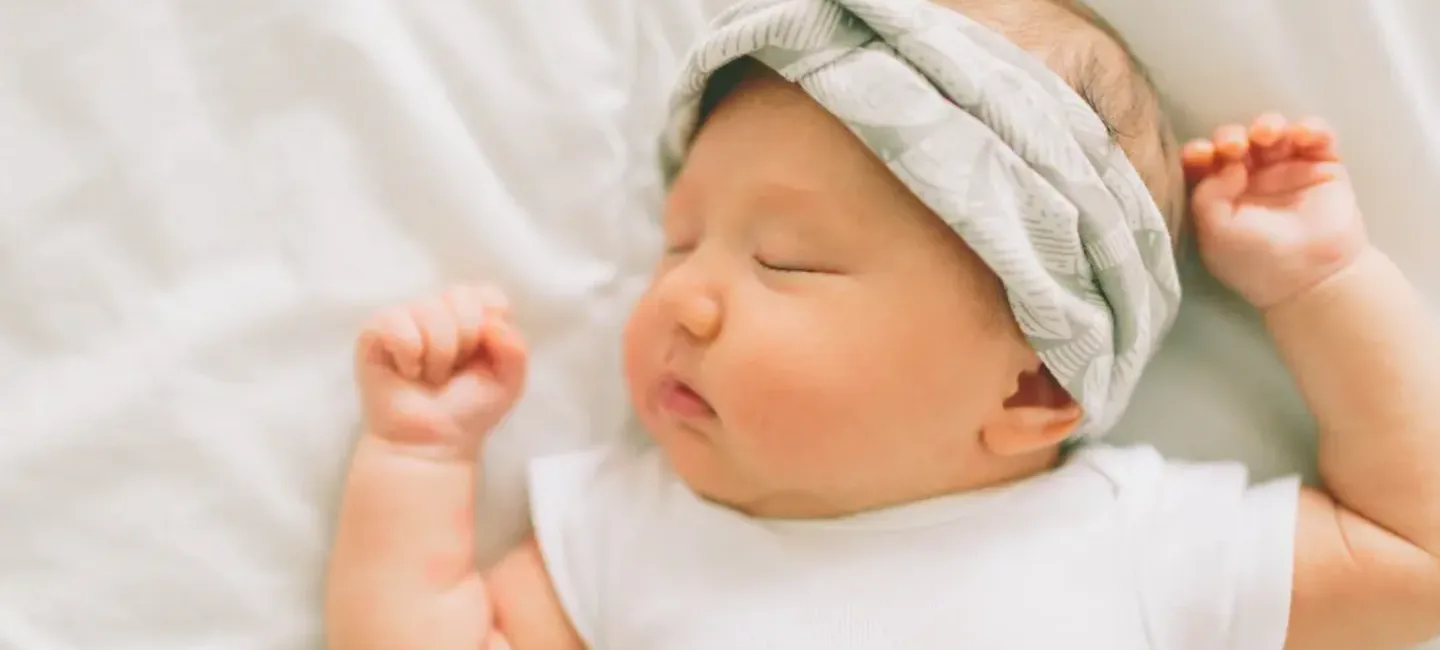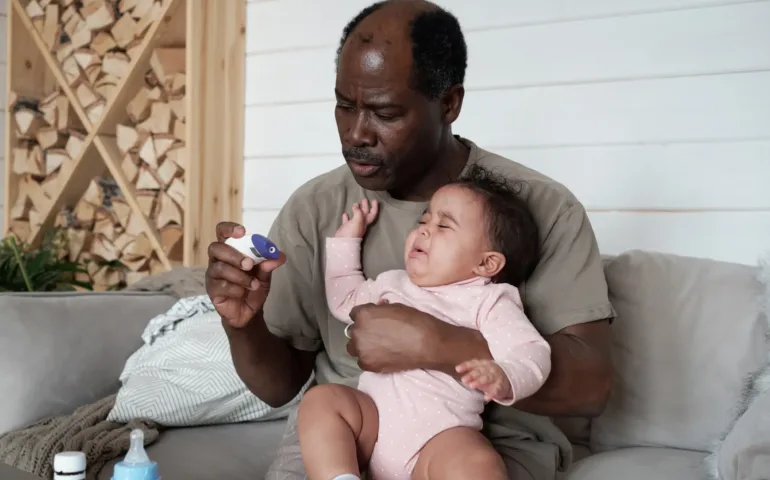
At birth, your baby already has many reflexes (no fewer than 70!) that guide them in this new world, outside their mother’s womb. Among these reflexes: the grasp reflex, the automatic walking reflex, and… the Moro reflex!
Moro reflex: here’s what you need to know.
Understanding the Moro reflex
Among your newborn’s reflexes, known as primitive reflexes, the Moro reflex is certainly one of the most surprising. Let’s take a closer look.
Primitive reflexes
Primitive reflexes are automatic, involuntary responses present from birth in newborns. In practice, babies are “programmed” to react in very specific ways to certain situations.
These primitive reflexes are essential for maturation and motor development because they help establish connections between the brain and the body. Among them are the sucking reflex (which helps the baby feed), the grasp reflex (which makes them tightly grip an object that touches their palm), and, of course, the Moro reflex.
What is the Moro reflex?
The Moro reflex is one of these primitive reflexes.
This reflex is an involuntary response observed in newborns when they experience a sudden stimulus, such as a loud noise or a quick movement. When triggered, the baby extends their arms and legs, opens their hands, and then brings their limbs back toward their body, often accompanied by crying. This reflex is a sign of the development of their nervous system.
The Moro reflex prepares your baby to respond to changing environments and helps them develop muscle tone and postural abilities. Although this reflex may seem alarming to parents, it is completely normal and fades as the nervous system develops and motor skills improve. By helping your baby react to external stimuli, the Moro reflex supports sensory maturation and development, laying the foundation for future voluntary movements and better motor coordination.
Causes and triggers of the Moro reflex
The Moro reflex is a natural reflex, but it can be triggered by different environmental stimuli.
Here are some common examples:
- Loud sounds: a sudden noise, such as a door slamming, can trigger this reflex.
- Sudden movements: lifting or setting down a baby too quickly can also provoke this reaction.
- Light changes: turning on a bright light suddenly in a dark room can also be a trigger.
It’s important to note that these stimuli are not necessarily harmful, but they can startle your baby, leading to this reflex response.
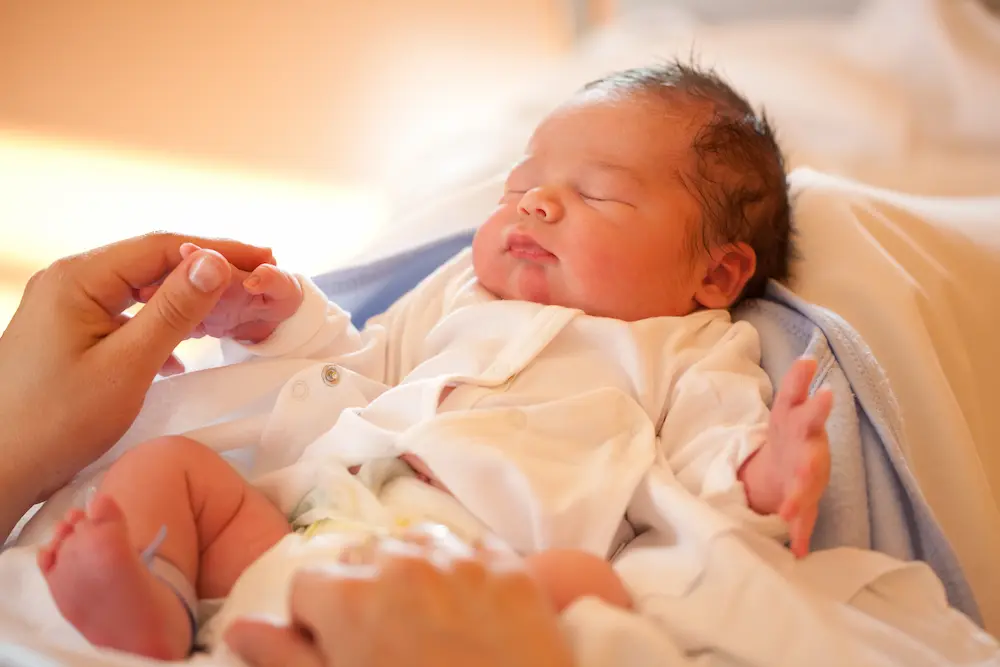
How the Moro reflex appears
The Moro reflex shows up as different physiological reactions in your baby:
- Startle: your baby suddenly spreads their arms and legs, often followed by crying.
- Arm extension: your baby’s arms open wide before returning to the body.
- Grasping: your baby’s hands may open and then close as if trying to grab something.
Don’t worry, this reflex is an automatic and temporary response that fades as your baby’s nervous system matures and their muscle tone and motor skills develop.

The evolution of the Moro reflex with age
Because it is closely linked to your baby’s motor development, the Moro reflex changes significantly during the first months. In the first few weeks of life, the Moro reflex is often very pronounced, as your baby’s nervous system is still maturing. As your baby grows, gains better control of their movements, and coordination improves, the Moro reflex gradually diminishes before disappearing completely.
Good to know: the Moro reflex generally starts to diminish between 3 and 4 months and completely disappears between 4 and 6 months.
Each child develops at their own pace, but if this reflex persists beyond the age ranges mentioned above, it could be a sign of poor integration of the Moro reflex. Consult your healthcare professional if you have any concerns.
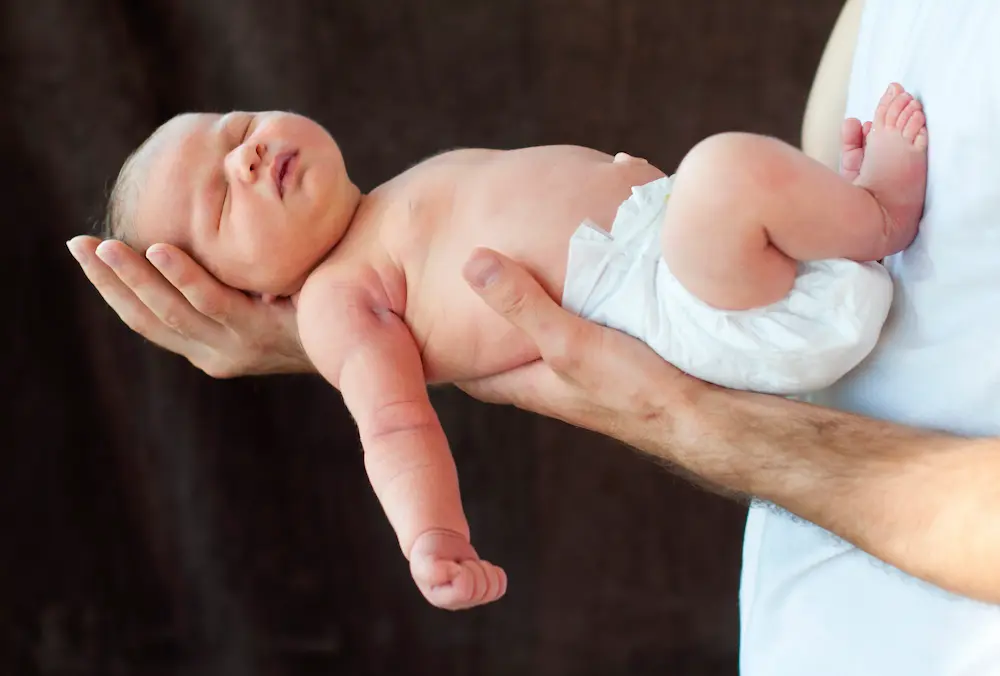
How to respond to the Moro reflex in babies
The Moro reflex is a natural phenomenon in newborns, but it can be minimized.
How to avoid triggering the Moro reflex
To reduce the Moro reflex, we recommend meeting your baby’s need for containment. After spending nine months in the womb, being in a snug and secure environment is reassuring. Here are some tips to meet this need for comfort:
- Hold your baby in a swaddled position: when holding your baby, keep their arms close to their body. This can reduce the sensation of falling that often triggers the reflex.
- Lay your baby down gently: when placing your baby in their bed, support their hips and shoulders. You can first lay them on their side and gently roll them onto their back to avoid abrupt movements.
- Create a soothing environment: slightly warm the bed with a small heating pad before laying your baby down, and listen to their breathing. Wait for a deep sigh, a sign they are entering a deeper sleep, before putting them down.
Medical consultation
Although the Moro reflex is a sign of good health and nervous system maturation in your baby, it’s important to know when to consult a pediatrician if certain signs appear:
- Persistent reflex: if the Moro reflex persists beyond 6 months, it could indicate a delay in motor or neurological development. A medical follow-up may be needed for a deeper evaluation.
- Excessive reactions: if you notice that your baby is constantly disturbed by this reflex or if it affects their sleep and well-being, consult for personalized advice tailored to their needs.
The Moro reflex is a natural phenomenon, essential for the maturation of the nervous system and motor development of your newborn. By using techniques like swaddled holding and creating a calming environment, you can help your baby feel more secure.
Want to learn more? Feel free to download the May app, where you’ll find plenty of resources to support and guide you throughout your journey as a new parent.
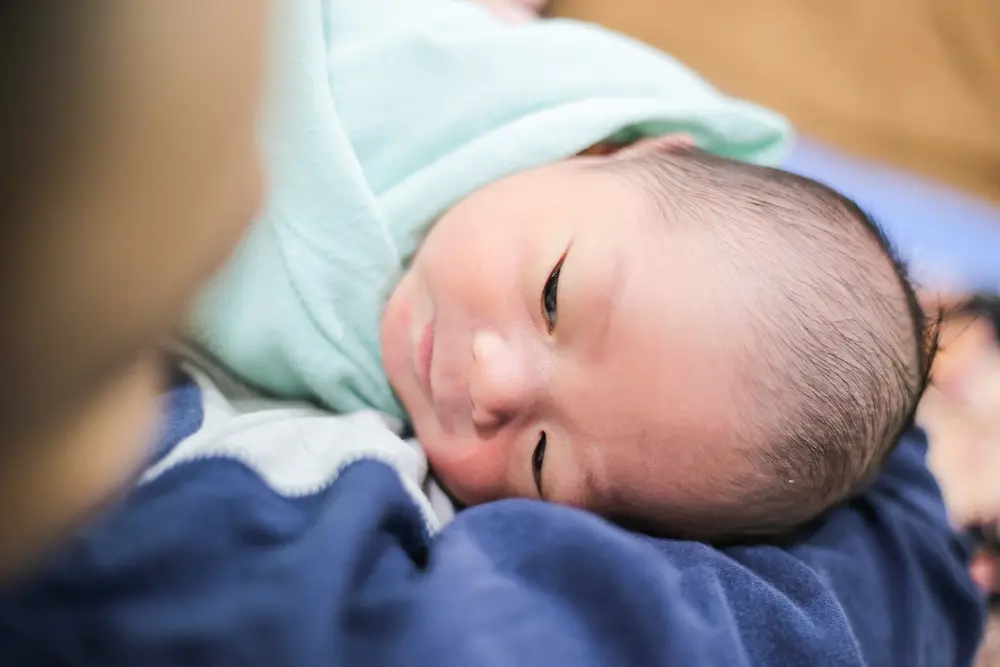
**
Photos: puhimec | icefront | halfpoint | DragonImages | danielhalis
This text was translated from French by an artificial intelligence. The information, advice, and sources it contains comply with French standards and may therefore not apply to your situation. Make sure to complement this reading by visiting the May US/UK app and consulting the healthcare professionals who are supporting you.
